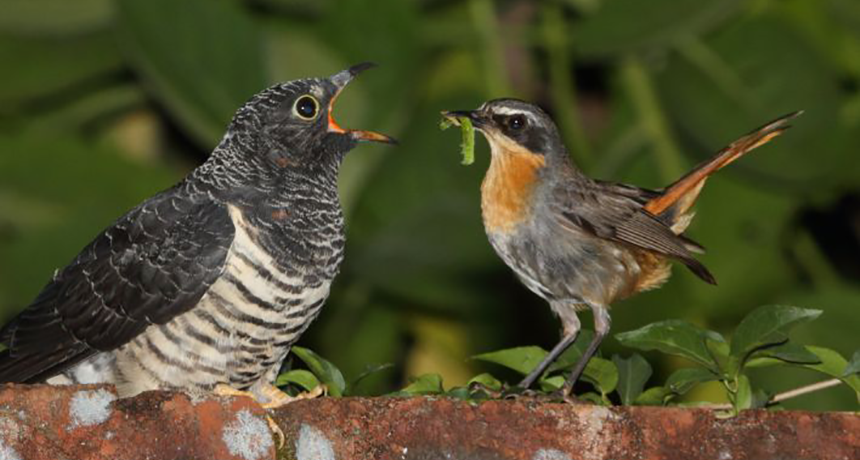In the intricate world of avian reproduction, cuckoo birds have perfected a strategy that is both fascinating and cunning: brood parasitism. This reproductive tactic involves cuckoos laying their eggs in the nests of other bird species, relying on deception to ensure the survival of their offspring at the expense of unwitting foster parents. This behavior not only showcases the adaptability of cuckoos but also raises intriguing questions about the evolutionary arms race between parasites and their hosts.
The Art of Brood Parasitism:
Cuckoos are adept at identifying suitable host nests, often choosing species that are smaller or less aggressive than themselves. Once they find a target nest, female cuckoos remove one or more host eggs and replace them with their own. The cuckoo eggs typically mimic the appearance of the host’s eggs, reducing the likelihood of detection.
Evolutionary Adaptations:
The ability of cuckoos to successfully parasitize other birds’ nests is supported by a suite of evolutionary adaptations. These include precise timing of egg laying to coincide with the host’s egg-laying period, as well as egg mimicry that matches the color and pattern of the host’s eggs, minimizing the risk of rejection by the foster parents.
Host-Parasite Coevolution:
The phenomenon of brood parasitism has driven a coevolutionary arms race between cuckoos and their host species. Hosts have evolved various strategies to combat parasitism, such as egg recognition and rejection behaviors, nest defense, and even abandoning parasitized nests to start anew. This ongoing evolutionary battle underscores the complex interactions between species competing for reproductive success.
Impact on Host Species:
Brood parasitism can have significant impacts on host species, both ecologically and behaviorally. Foster parents may invest time and resources in raising unrelated offspring, potentially at the expense of their own reproductive success. In some cases, parasitized hosts may experience population declines if they are unable to effectively defend against cuckoo intrusion.
FAQ:
Do all cuckoo species practice brood parasitism?
No, while many cuckoo species are known for brood parasitism, not all species employ this reproductive strategy. Some cuckoos build their own nests and care for their young.
How do cuckoos ensure their eggs are accepted by host parents?
Cuckoos have evolved to lay eggs that closely resemble those of their host species. This mimicry reduces the likelihood of the host birds recognizing and rejecting the cuckoo eggs.
What happens to the host’s own eggs once a cuckoo egg is laid?
In many cases, host birds may either incubate and raise the cuckoo chick alongside their own offspring or abandon the nest altogether if they detect the parasitism early enough.
The reproductive strategy of brood parasitism in cuckoo birds is a striking example of nature’s ingenuity and complexity. Through mimicry and deception, cuckoos have evolved to exploit the parental care of other bird species, ensuring the survival of their young even at the expense of unwitting hosts. As scientists delve deeper into the dynamics of host-parasite interactions, the story of the parasitic cuckoo continues to unravel fascinating insights into the evolutionary pressures that shape behavior and adaptation in the animal kingdom.







